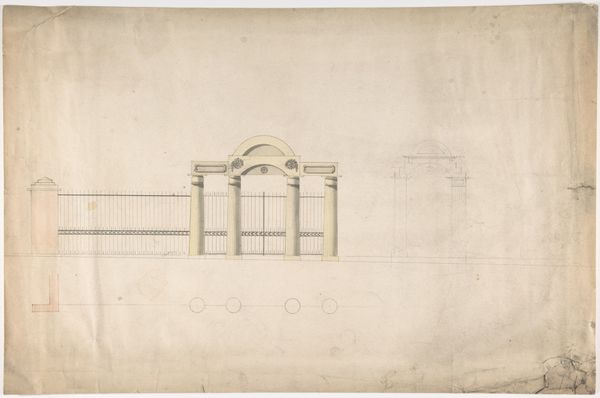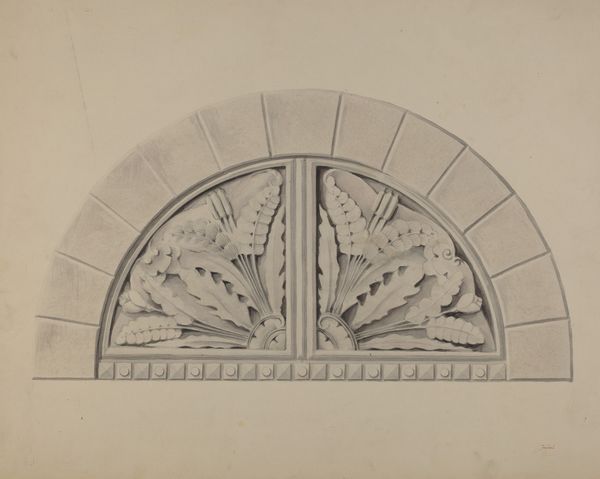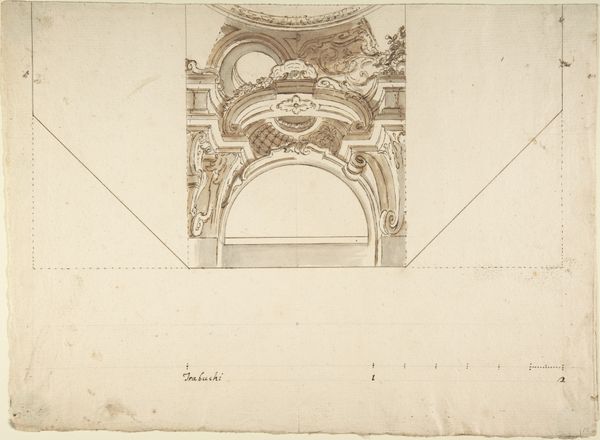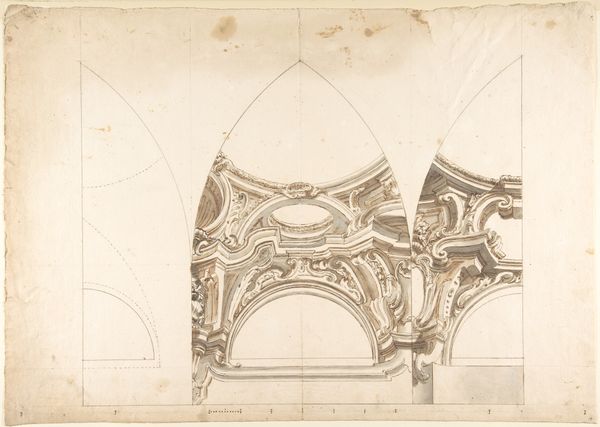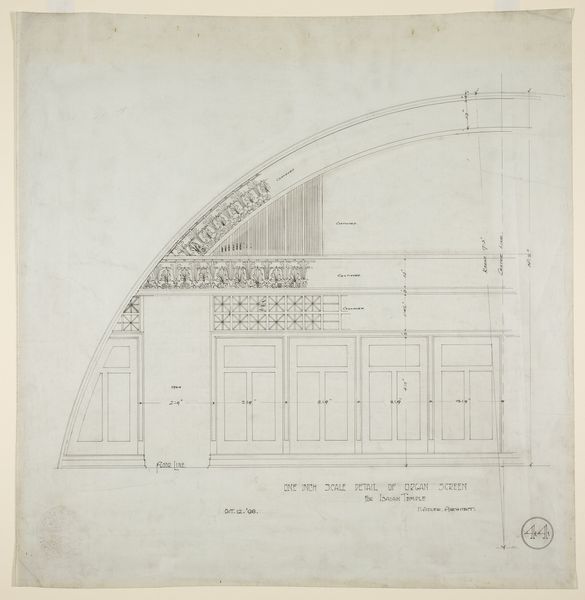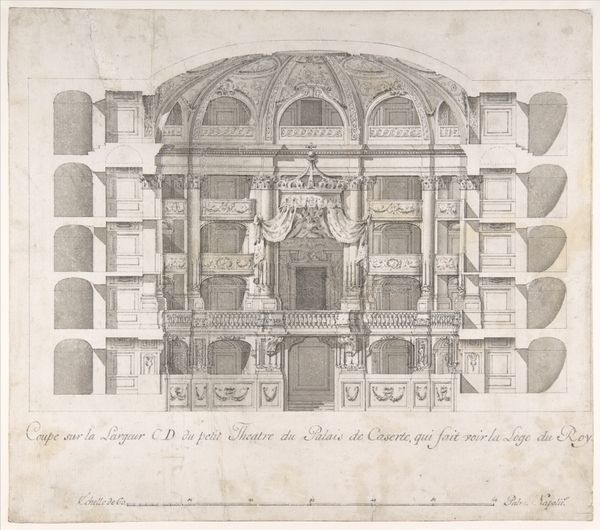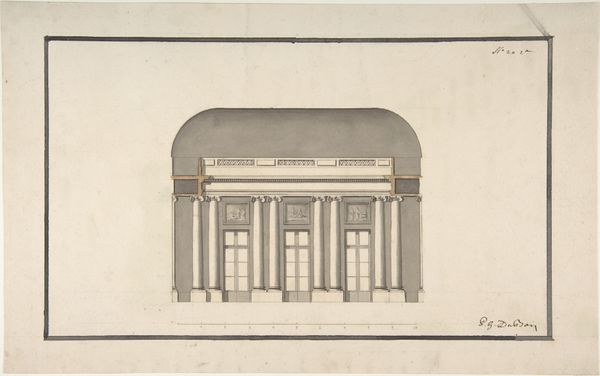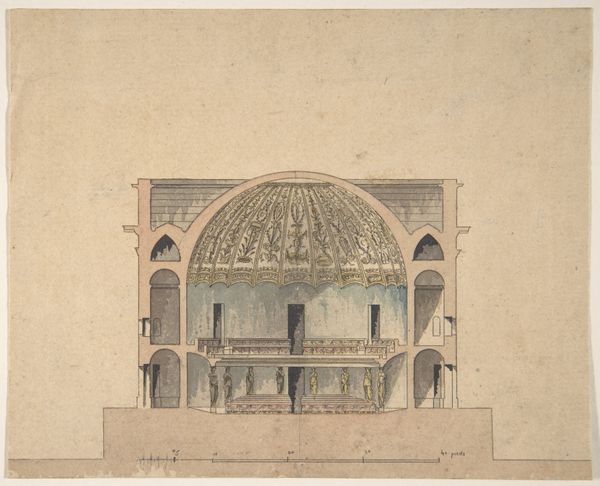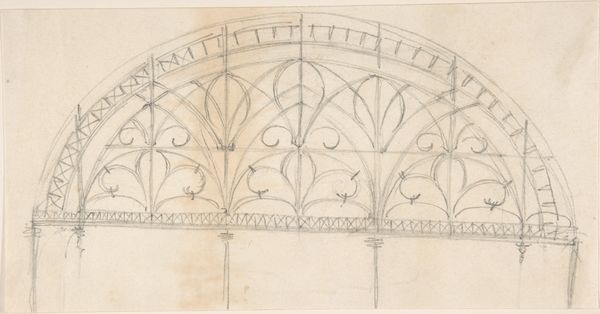
drawing, print, watercolor, architecture
#
drawing
# print
#
landscape
#
perspective
#
watercolor
#
romanticism
#
watercolor
#
architecture
Copyright: Public Domain
Curator: Looking at Thomas Guilford’s “Chatsworth Conservatory,” dating from 1836-1841, currently held at the Metropolitan Museum of Art, one is struck by its meticulous detail, rendered through watercolor and ink on paper. Editor: Yes, an immediate impression is its echoing vastness! The space is defined by repetitive forms, especially the long rows of columns that disappear in soft, ethereal perspective. There is something both airy and melancholic about it. Curator: The watercolor's cool palette and architectural precision speak volumes about the Conservatory’s role during the period. Structures like these signaled imperial ambition, and the control and ordering of nature. We're seeing how elites sought to impress through orchestrated displays of exotic flora, bringing foreign territories home, so to speak. Editor: The transparency afforded by watercolor seems apt; it suggests both the literal transparency of the glass structure, and a kind of aspirational openness that such displays promoted. Was this place intended for broad public access? How many saw it in reality, rather than in idealized representations? Curator: Access would have been somewhat restricted, a signifier of elite status itself. But in terms of the imagery, representations like this print made it a circulating image, helping establish a shared visual vocabulary. Think of the column capitals—they invoke classical architectural motifs, grounding the structure in an established lineage of power. It implies longevity. Editor: Yes, these buildings become part of a theater for public instruction. The careful vanishing point pulls your eye right, into a space of idealized potential, though the subtle washes evoke fragility and impermanence. I’m left considering how these grand projects ultimately survive or fail, whether literally, or symbolically, in cultural memory. Curator: It also forces you to think about sustainability, something increasingly top of mind as more fragile structures are brought forth into the modern world. It suggests both power and the very real problem of lasting effect. Editor: Looking at it, it suggests to me how buildings affect the way we organize not just space, but the possibilities contained within space. Curator: Indeed, an imposing testament! Thanks to this evocative work of Thomas Guilford, we get a new look into the power that imagery had during that time.
Comments
No comments
Be the first to comment and join the conversation on the ultimate creative platform.
